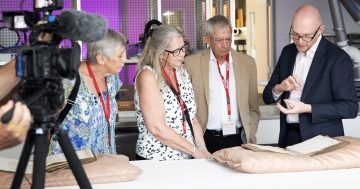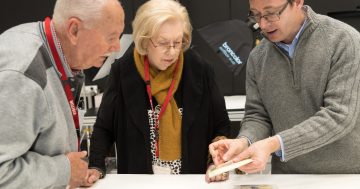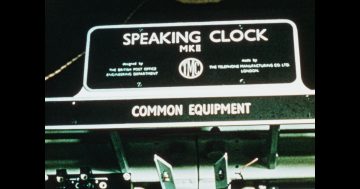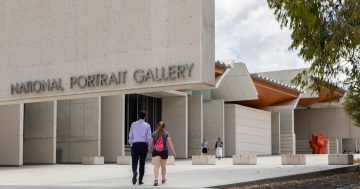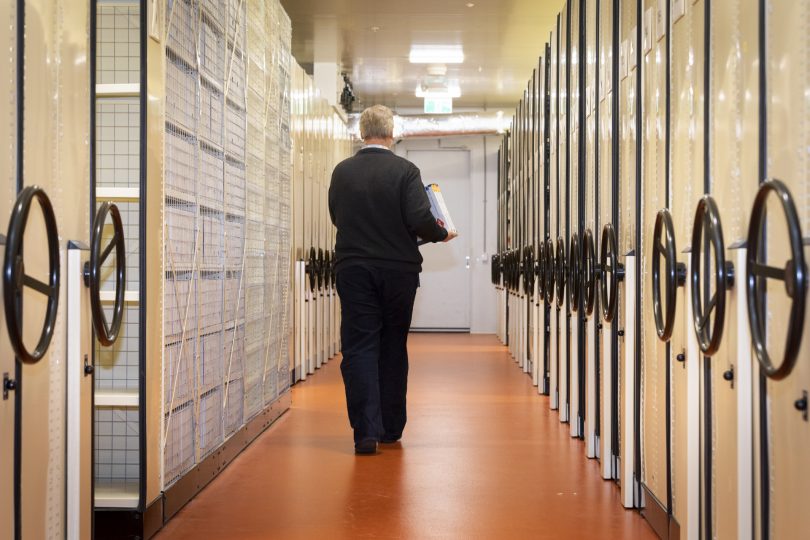
The National Archives of Australia storage facility. Photo: Michelle Kroll.
The National Archives of Australia may have won funding to cover the backlog of at-risk records in need of digitisation but its greater ambitions to take a more commanding role in preserving and protecting documents across government will have to wait.
In July, the Federal Government granted the NAA the $67.7 million recommended by former Finance secretary David Tune to address immediate needs after a vocal campaign from the agency and its supporters.
The government has now released its response to the Tune review, agreeing to or agreeing in principle to all 20 recommendations.
But key proposals will be sent off to a committee or await the justification of a business case.
Mr Tune recommended that the NAA assume authority and responsibility for information management, recordkeeping and archiving across the government, and these functions be consolidated into a single Government Information Management Model (GIMM).
About 63 per cent of the 1,000 staff employed by agencies on records and information management would transfer to the NAA while staying in their existing agencies.
But the government has opted for “better collaboration and training across government” to achieve the desired efficiencies, and will consider a GIMM, subject to a business case, if the short to medium term changes do not work.
My Public Sector
“The Government supports the outcomes intended by the GIMM, but will instead convene a committee comprising senior officers of the National Archives and senior officers responsible for data and information management in agencies across government as the vehicle
through which those efficiencies and improvements will be driven in the short to medium term,” the government says.
It has also put off a proposal for a central storage, management and digitisation facility, saying the first step is to streamline existing
facilities, relocate the national archival collection and better use key sites.
Mr Tune also recommended $167 million be spent boosting the NAA’s technological capability and cybersecurity, including the establishment of a secure 5th Generation Digital Archive (5thGDA) for government information.
An audit found that the NAA was vulnerable to cyber attacks and recommended that it develop a plan to comply with Australian Cyber Security Centre mitigation strategies.
But the government won’t be providing any more funding beyond the $67.7 million, some of which will go to cyber security.
It says the NAA can use the resources of other agencies to enhance security but will consider further development such as a 5thGDA as part of future budget processes and subject to a business case.

Director David Fricker, and Catriona Donnelly at the Parkes building. Photo: Michelle Kroll.
Director David Fricker told a parliamentary hearing on Thursday (19 August) that the threat to the NAA was real.
“We will never sugarcoat … the scale of the threat or the need for us to continue every day to face new emerging vulnerabilities,” he said.
“The responsibility’s on me and on our institution to develop those business cases … working across government to make sure that the investment proposals … reflect the threat and our capacity to address those vulnerabilities.”
A recommendation to make it easier for the public to access records will also be dealt with by committee but the government notes that any altered processes must not result in an inappropriate release of classified and highly sensitive documents.
The public can also expect to have to pay for a wider range of services.
The government has agreed to the NAA charging new public user fees, including charges for value-added services, subject to public consultation.
Mr Tune also raised the question of whether maintaining separate state and territory offices and facilities was still relevant or efficient in the digital era.
The government has agreed to his recommendation that the NAA continue to review arrangements for these offices, including the possibility of co-location with other institutions, to ensure they remain fit-for-purpose and deliver the best operational outcomes and service delivery.
